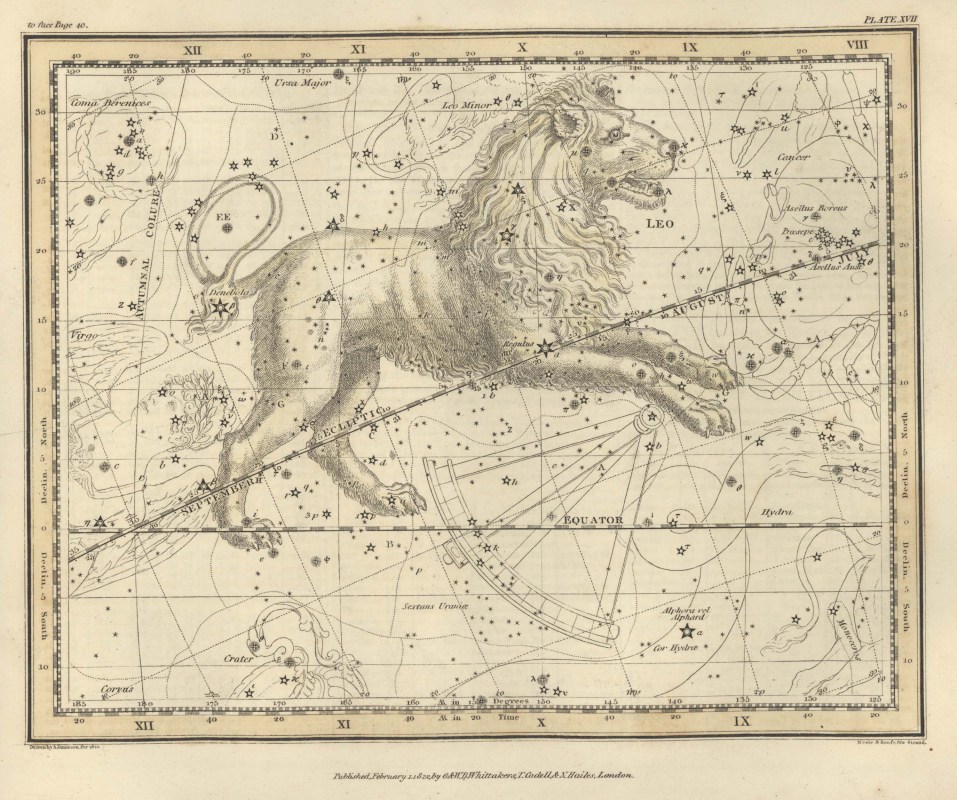Living in London in 1822 was not always great. Since the skies were filled with soot, rivers with sewage and the streets with people, carts and waste, people needed a bit of an escape. For a relatively modest fee, you could buy a celestial atlas that placed the night sky and otherworldly landscapes in the palms of your hands. You could search for crabs and bulls and mythological heroes in the heavens above your head.
Constellations have been orally discussed since ancient times, but in the early 17th century, they were compiled into comprehensive atlases. As the 17th century wore on, more and more people started to make celestial maps for a public audience, writes Atlas Obscura, and they were designed for non-experts. Stars were made into recognizable, wonderful creatures and scenes, often depicting the ancient myths that gave the constellations their names. In 1822, Scottish schoolteacher Alexander Jamieson created and printed in London a book of 30 illustrations of only constellations that could be seen with the naked eye. The Celestial Atlas was easy to carry around, and it was popular enough that Jamieson released a second edition only a few months after the first.
Thanks for reading InsideHook. Sign up for our daily newsletter and be in the know.


















